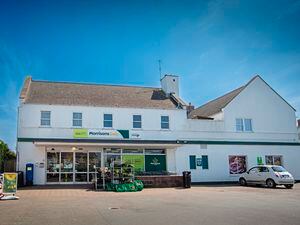Grammar ranks among best schools nationally
AHEAD of the next crucial Education debate on 30 November, it is vital that we, on behalf of the Intermediate and Grammar Schools Association, share with you at this time some crucial and compelling performance indicators which simply cannot be ignored. The Department for Education in the UK has recently published the results of the new Progress 8 performance measure, which replaces the discredited five GCSE grades A*-C including English and maths measure and instead aims to capture the progress a pupil makes from the end of primary school to the end of secondary school. It is a type of value-added measure, which means that pupils' results are compared with the actual achievements of other pupils with the same prior attainment. It assesses and ranks every secondary school in England (both selective and non-selective) on the extent to which the school adds average grades to its GCSE results. The range is usually between -1.00 and +1.00. A full link to the UK national results can be found here: https://www.compare-school-performance.service.gov.uk/schools-by-type?step=phase&geographic=all®ion=0&phase=secondary and an extremely useful video explaining Progress 8 is available at: https://m.youtube.com/watch?v=4IAEgFMSGDY.
The 2016 Progress 8 score for the Guernsey Grammar School was +0.63, which would place the school's performance within the top 1.5% of all secondary schools nationally. The statistic means that, on average, our Grammar School students achieved 0.63 of a grade better than their English counterparts starting with the same end-of-primary attainment. Only 82 out of 6,381 secondary schools in the whole of the UK achieved a higher score than the Guernsey Grammar School in Progress 8 in 2016. It is important to stress that this a progress measure and so takes account of students' prior attainment and demonstrates the excellent value-added achieved by the Grammar School. Further details of the school's examination results are available on its website at http://web.grammar.sch.gg/about/school-exam-result.
These extremely impressive, independently assessed statistics clearly highlight the unequivocal current excellence of the Grammar School, measured against the most relevant possible benchmarks. It is imperative that every single one of our elected deputies is made aware of these statistics ahead of the forthcoming debate.
It may well be the case that the selection method needs revision, hopefully to a format which can lead to out-performance of even these results. However, an experiment to abolish the Grammar School in favour of an untried system (or in the case of the UK, a system which has widely failed there), is an unnecessary and unconscionable risk for our politicians to take.
Whatever else is decided about our secondary schools in November, and whatever method is decided upon to admit pupils to the Grammar School as an institution of proven educational excellence, we would implore each of you to think very long, and very hard, before ridding the Bailiwick of a school which is already delivering a proven level of excellence which compares so well against the best UK secondary schools.
We are not sure whether the Education Department will separately be publishing these statistics, either for the Grammar School or for the other secondary schools, but in our opinion no debate should take place without the Progress 8 statistics for all local secondary schools being in the public domain. This is the most reliable, most relevant and most up- to-date performance indicator for all secondary schools and a comparison against peer group schools in the UK is extremely useful when considering the future of all of our secondary schools.
Regarding the benchmarking of A-level and IB diploma performance at the Sixth Form Centre, there will, unfortunately, be no definitive national data available for the previous academic year until January 2017. However, we understand that the Sixth Form Centre results will rank within the top one third nationally for value added at A-level. While not as impressive as the 11-16 age sector of the school, a top third ranking nationally is a performance of which the Sixth Form Centre and its students and staff can rightly be proud.
We note that once again, there is talk of combining the Sixth Form Centre into some form of tertiary college. The evidence showing this to be the worst-performing and least efficient post-16 delivery vehicle is overwhelming, as shown in the sources below:
http://cee.lse.ac.uk/ceedps/ceedp124.pdf
http://www.sixthformcolleges.org/about-sixth-form-colleges
http://www.sixthformcolleges.org/sites/default/files/London%20Economics_Value%20for%20 money%20in%20Sixth%20Form%20education_FINAL%20REPORT_0.pdf
We are obliged to ask why Guernsey would even consider opting for a model which has been proven to deliver the worst possible results and the highest cost?
We therefore urge you to factor the continuation of this centre of educational excellence and efficiency into the future structure of secondary education on the island and to obtain clarity on the value-added performance of the island's other secondary schools before making any decisions which might affect their futures and the quality of provision for the island's children.
KEITH CORBIN,
Chairman, IGSA.
DAVID PIESING,
Vice-chairman, IGSA.





